Complete Pure Water Packages
 FREE SHIPPING ON ORDERS OVER $49
FREE SHIPPING ON ORDERS OVER $49
*Ground shipments to the continental US.
Check out our complete collection of Water Fed Cleaning Packages and kits. If you’re running a professional window cleaning business or just starting out, these pure water window cleaning systems are your best choice. Check out different packages from the industry’s top brands like XERO, Pure Water Power, OVA8, Unger, and more. Pure water cleaning has revolutionized how we clean windows and surfaces, whether you are working with an RO/DI system, or a DI tank.
*Our complete packages included everything beginner waterfed users, all the way to commercial waterfed window washers. We have kits as small as a basic XERO DI Tank and XERO Carbon Fiber Pole, or as large as the Ultimate Residential Kit, which comes jam-packed with all the necessary tools and accessories to crush any job. When you decide to go with a complete package, you take the stress away from making sure you get the necessary components to be successful with waterfed work. If you still feel lost, that’s okay! It can be a lot to get started! We have experts ready to help you sort through precisely what you will need for your business to the smallest detail. Working with one of our product specialists ensures you get the right pole and every necessary fitting to get started right away.
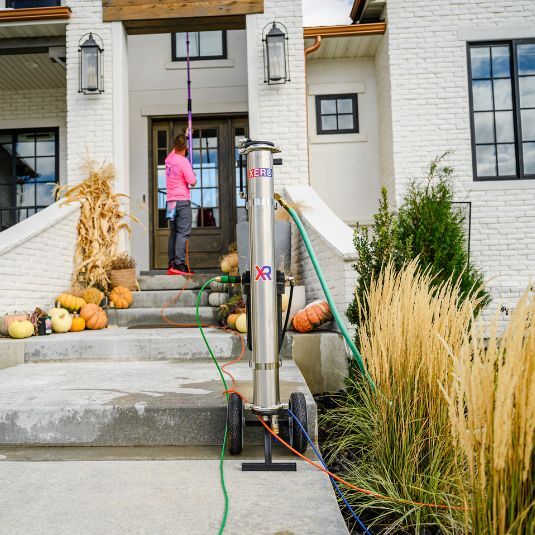
what is pure water cleaning?
Waterfed window cleaning works on the premise of using pure water to clean glass surfaces. In its natural state, regular tap water contains impurities. Waterfed equipment uses purified water which leaves a spot-free finish, eliminating the need to use soaps and chemicals or ladders. A purification system will take the source water and remove the impurities before it is fed through your window cleaning pole and brush, through deionization (DI), and/or reverse osmosis(RO). There are several different types of pure water systems including single stage systems, multi-stage systems and delivery systems. Waterfed cleaning also has many benefits including being safer as well as more efficient and environmentally friendly. For a more comprehensive overview and understanding of waterfed window cleaning, check out our Understanding Waterfed Guide to learn more.

How do you clean with pure water?
To actually clean windows with pure water, tap water is run through the stages of a system, through waterfed hose, and then up the pole to a waterfed brush. The user will pre-rinse the frames and glass, scrub and rinse again. The brush will scrub and “agitate” the glass surface to loosen any dirt or debris. Once it’s rinsed with purified water, the water will evaporate and the window will dry clean and streak free.
Pure water systems are classified into a few different categories based on whether you will work with hard or soft water. If your TDS (total dissolved solids) is under 100, your water is considered soft; if it’s 100 it is generally classified as hard water. If you're unsure what kind of water you have, check your TDS here. Our systems feature different stages of filtration to ensure water is pure through either DI or RO/DI filtration. Replacement filters, parts, and fittings are available when you need them to keep your system running efficiently.
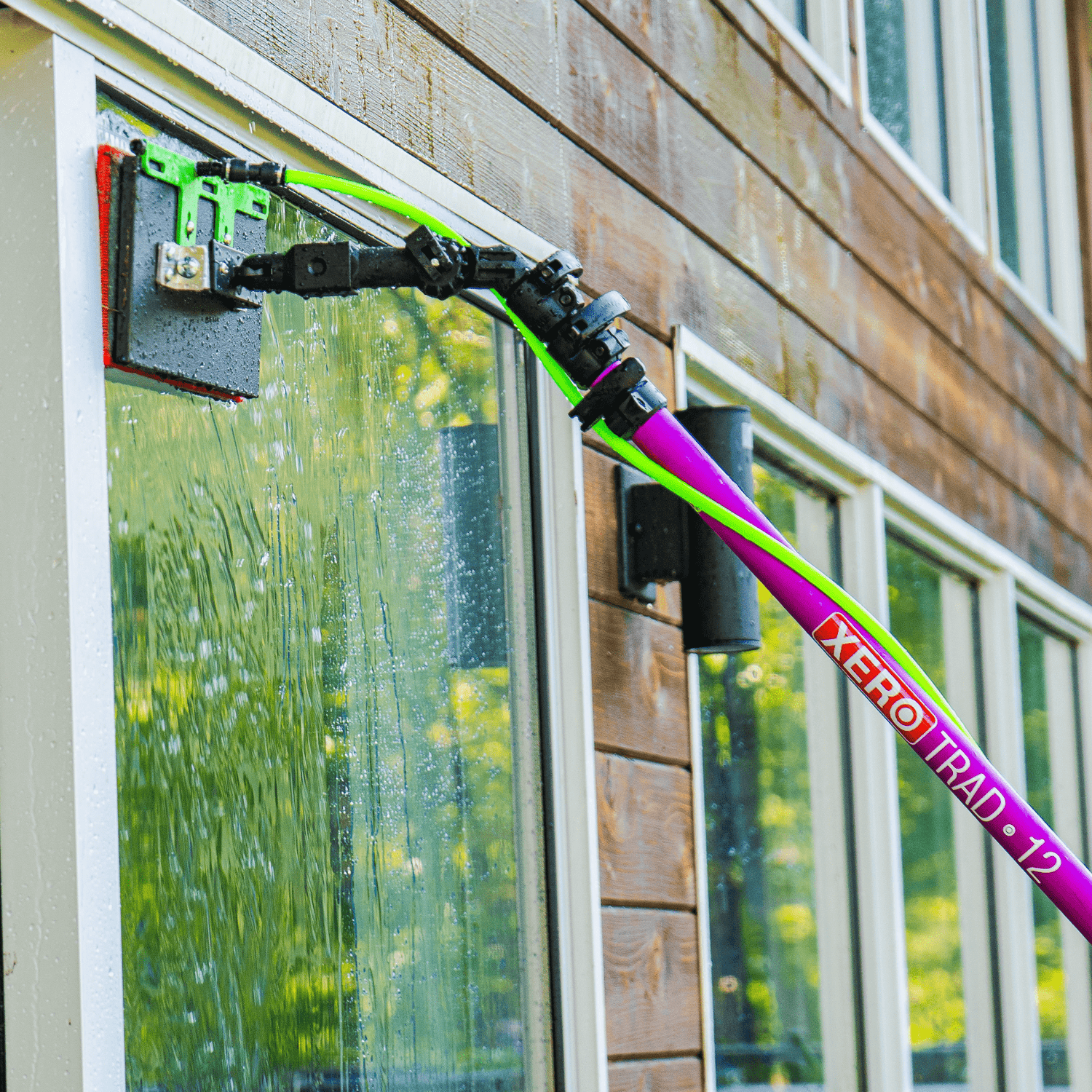
How do water fed poles work?
Pure water cleaning makes use of waterfed poles to reach windows at any height, completely eliminating the need for a ladder. The brush agitates and lifts off the dirt from windows. It’s crucial to use purified water to ensure the glass dries clear, as the lack of minerals in pure water attracts dirt and pulls it off surfaces as it rinses and dries. You will benefit from reliable waterfed equipment that lasts for a long time, it truly is an investment. Whether you’re a novice or a seasoned waterfed expert, XERO Waterfed Poles stand out as an exceptional choice, enabling you to tackle any job at any height. Whether you are a residential or commercial window cleaner, beginner or seasoned veteran in the industry, there is a XERO pole for you. Explore more by reading Ten Reasons to Choose a XERO Pole.
To learn more about waterfed poles and how they work, you will enjoy this quick read: "Do Water Fed Poles Work?" This article offers a full understanding on how to operate, select a material, and ultimately choose a pole that best suits your needs as a window cleaner!
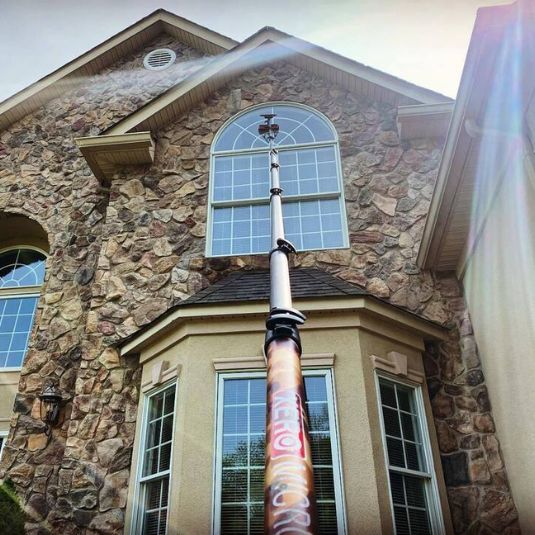
what size water fed pole do I need?
Step one is to determine the length you need for pure water cleaning based on the height of jobs you'll be taking on. Will you be working on residential buildings with one or two stories or larger commercial buildings with up to five stories? Although their telescopic design allows you to work with varying lengths locked in, you don't want to end up with a product that's too long and heavy if you perform more lower level work. On the other hand, you don’t want to miss out on jobs because your waterfed pole isn’t capable of reaching that height.
Waterfed poles come in various materials, such as aluminum, fiberglass, or carbon fiber, with varying levels of stiffness and weight. If you plan on using your waterfed pole daily, we always recommend some type of carbon fiber. You’ll fined lex flex in carbon fiber versus aluminum or fiberglass poles. Every waterfed pole comes with a brush to get you started, but there are many other brushes to choose from when you want to upgrade or change it out. Feeling a bit overwhelmed with all the choices? Give us a call or send a message through the live chat at the bottom of the screen. Our Product Experts will happily walk you through determining the perfect water-fed package.
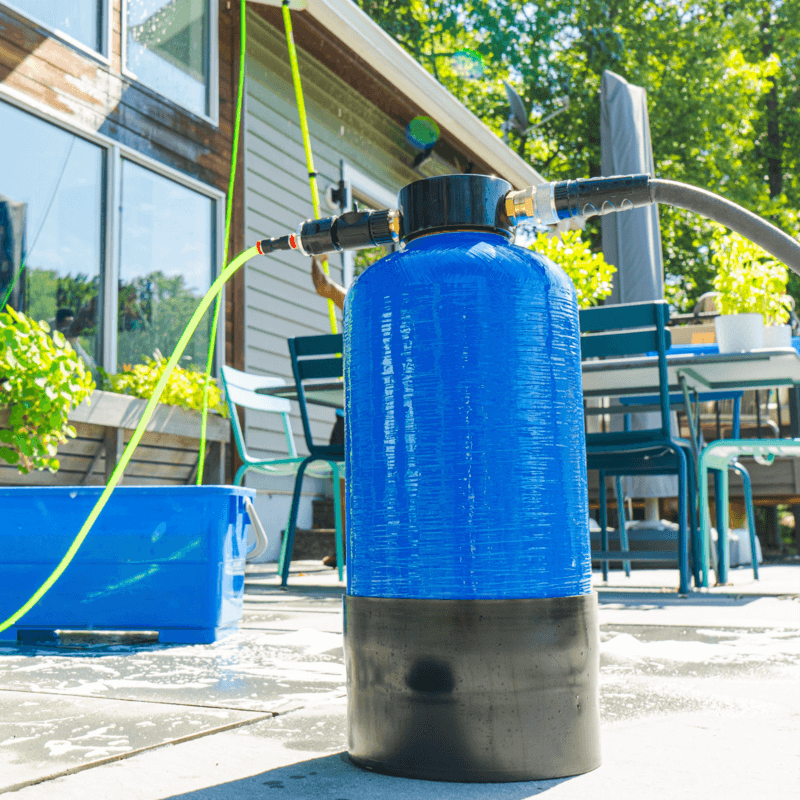
How to choose your system
When you decide to jump into waterfed window cleaning, the most important thing to consider is the average TDS of your area, which will help you determine if you need a single stage system or multi-stage system. For example, if you work in an area with a TDS of 100-150, a multi-stage system could be overkill for you. Instead, we would suggest a XERO DI Tank or a Unger HydroPower Single Stage. If your TDS is over 150 or you’re tackling larger commercial jobs or operating multiple poles at once, a multi-stage would be more beneficial for you.
Most customers find that the original XERO Pure is more than sufficient for their hard water. If you’re needing to run two poles or need something you won’t outgrow, consider the XERO Pure MAX Plus. Once you know your TDS, the next consideration is what the majority of your jobs will be, such as residential or commercial. If you are a residential window cleaner, the XERO Pure or Pure Plus will be enough, that’s why it is our best-selling purification unit. If you need additional advice from a product specialist, reach out! We’re here to help 24/7!
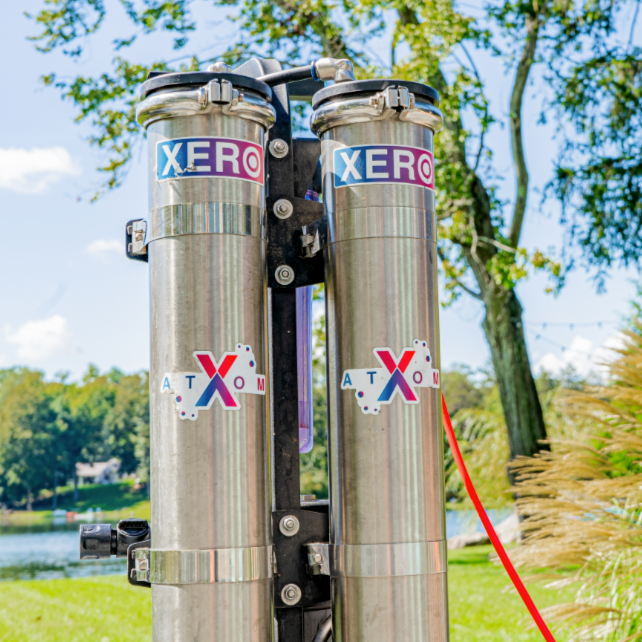
why use a pure water system?
Working with pure water features a multitude of benefits. For example, you can avoid working on ladders or scaffolds which result in a drastic number of injuries, falls and even death! Simply put, waterfed window cleaning is safer. Waterfed poles can reach all the way up to 90 feet, all while keeping your feet firmly planted on the ground. Another benefit is no longer needing to work with harsh chemicals or soaps. Pure water will leave windows looking flawless without them. Efficiency wise, waterfed cleaning can speed up the job as the windows and frames can be cleaned at the same time. You and your team can work smarter, more efficiently and at greater heights!





